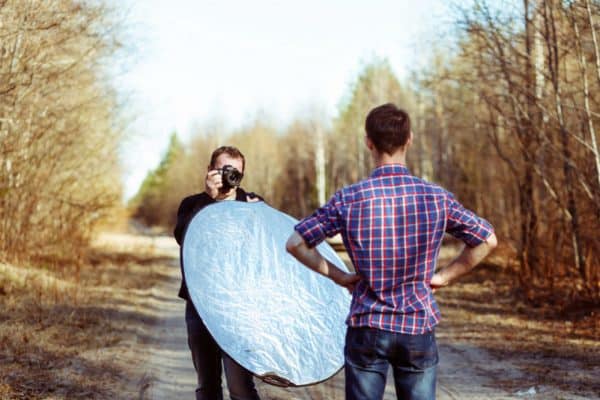

When you add a reflector to your kit you can achieve even lighting on your toy, fill in those deep shadows and eliminate that shiny plastic line so often seen in toy photography. Why? Because when you shoot outdoors, you only have one light source – the sun, and it’s rarely where you need it.
USE REFLECTOR PHOTOGRAPHY BY SELF HOW TO
Be sure to aim the white side at the subject, and keep the reflector-as-flag as far from the subject as possible to prevent unwanted bounce and fill.Every outdoor photographer should have a reflector in their kit and know how to use it while shooting their toys. Some 5-in-1 combo reflectors actually include a black zip-on cover for this express purpose, but in a pinch, even a white or silver reflector can be turned into a flag if it’s used thoughtfully. While a black fabric flag is ideal, a make-do option is to use the reflector as a flag-placing it far from the subject but between the light source and subject to cut the light. Flags can also be used to simply block an unattractive light (like a tungsten can light in the ceiling) from spilling onto a subject’s head. This can be useful in direct sunlight or to create edge transitions between light and shadow in studio. Ideally, a flag is a black foamcore or fabric panel that blocks all the light from a source, creating a shadow. Use a Collapsible Light Reflector as a Flagįinally, the third and most “rule-breaking” way to use your reflector is as a flag. The added benefit of this approach is that with the sun behind the subject, it acts as a hair light or rim light setting them off from the background. My suggestion with portraits is almost always to start with white for its softening effect, switching to silver only if pop or distance is needed and choosing gold only if it’s a warm special effect that you’re after. The same positioning rules apply, as do the options for choosing silver/white/gold reflectors. Rather than opening up to expose correctly for the shaded face (and consequently overexposing the entirety of the background) simply add a reflector in front of the subject, bouncing sunlight into her face to create a whole new key light. But if you position the subject such that the sun is at their back or so they’re standing in shadow, a reflector positioned in front of the subject can provide a frontal key-changing the primary “source” of the illumination from the sun to the reflector.įor instance, with a subject standing with the sun at her back, a normal daylight exposure would render her face in shadow. When working outdoors in particular, many photographers find the sun and position themselves such that the sun is over their shoulder and acting as the key light. Many of us think of reflectors as fill lights by default, but why not think outside the box and turn that reflector into a key? The key is the main source of illumination, setting the stage for the overall look and feel of the scene. Use a Collapsible Reflector as a Key Light This will keep the shadows falling top-down rather than the unrealistic angles of a reflector from below. If the key light is camera right and high, try filling from camera left and also above the subject’s eye line. Light doesn’t usually come up from the ground, so instead the fill will look more natural if it’s coming from above. Better still is moving the reflector from below if possible. If you’re going to fill from below and you’re going for a natural look, be sure to keep the fill subtle and minimal by using the white side of the reflector and positioning it relatively far from the face. Why is so much light coming up from below? Yep, that sure will light up those shadows-but it will also look a little ridiculous. With sunlight coming from above, many people see shadows below eyes, noses and chins, so they put the reflector level to the ground and below the subject. Practically as important as the color of the reflector you use as a fill is where you position it. Where To Position a Collapsible Reflector

Less is more, especially when it comes to changing the color of reflected fill light, so only use gold sparingly. You’re shooting with the gold reflector thinking it’s adding a hint of golden glow only to discover when you import your images that the gold is overpowering the scene in a way that doesn’t make sense. Why? Because it’s just way too warm for all but the most dramatic scenarios. And almost never, in my experience, is the gold side the right reflector. Only in special circumstances should you use the silver/gold combo to warm up the subject’s face and give a hint of golden glow.


 0 kommentar(er)
0 kommentar(er)
